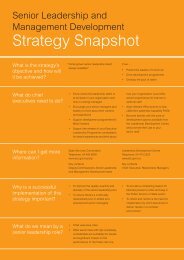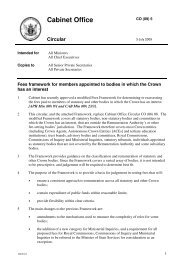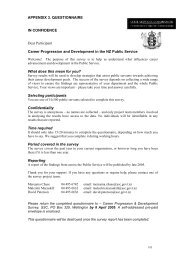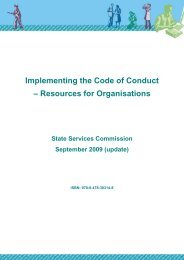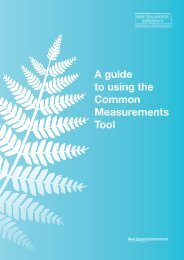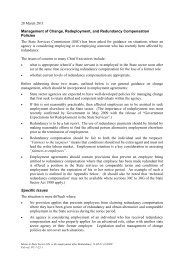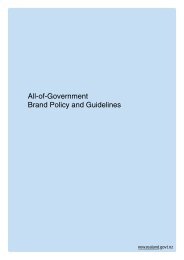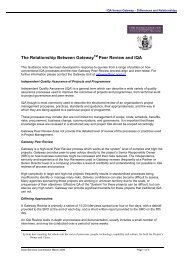Better Public Services Advisory Group Report - November 2011
Better Public Services Advisory Group Report - November 2011
Better Public Services Advisory Group Report - November 2011
You also want an ePaper? Increase the reach of your titles
YUMPU automatically turns print PDFs into web optimized ePapers that Google loves.
services in this manner, as proposed by the <strong>Advisory</strong> <strong>Group</strong>, they would of course be the<br />
ones to shape and decide which actual results the government of the day might choose to<br />
pursue.<br />
3.21 What the work undertaken by the chief executives shows, however, is that amongst the<br />
current leadership of New Zealand’s state services, there is a common belief that our efforts<br />
are spread too thin, are not well coordinated and would benefit from a sharper focus on<br />
bigger challenges that are likely to make a bigger difference. Even within the constraints of<br />
the current system, some changes could be made to drive better results. The <strong>Advisory</strong><br />
<strong>Group</strong> supports the chief executive groups’ direction of travel, and the nature of their<br />
suggested sets of results, but considers that with further work on the sectoral results<br />
framework, and ministerial backing, significant improvements in performance could be<br />
secured. Some of the indicative thinking developed by the groups of sectoral chief<br />
executives is set out below. Should Ministers agree to consider or adopt this approach,<br />
further analysis of results options would be required.<br />
• Natural resources 24 : Tentative results identified included the quality, flow and<br />
availability of fresh water and value derived from the coastal and marine area. The<br />
sector noted the importance of working with iwi and local government as well as other<br />
stakeholder and user groups in pursuing these objectives. Chief executives<br />
emphasised the importance of evaluating any programmes introduced and the need<br />
for tighter governance arrangements at both ministerial and agency level.<br />
The <strong>Advisory</strong> <strong>Group</strong> concurs with this initial thinking, but believes that the current<br />
voluntary and consensus-based arrangements that guide the work of the natural<br />
resources chief executives’ group may not be robust enough in the quest for results.<br />
<strong>Better</strong> traction would probably be made on one or both of these results by<br />
establishing, for example, a more formal joint venture arrangement that brings<br />
together staff and resources from a range of agencies into a single shared entity.<br />
• Social sector 25 : A semi-formal social services chief executives’ sector group has been<br />
operating for about 10 years. It has already established a track record of reporting<br />
jointly to Ministers and running pilot joint ventures focused on specific local issues.<br />
The critical two results that the social sector chief executives identified in this exercise<br />
were improved services for children aged 0–6 from families with multiple issues and<br />
young people contributing and achieving.<br />
The chief executives judged that if significant efforts were made by their collective<br />
agencies to make an impact on just these two targets, much better social outcomes<br />
would be generated over the long term. The chief executives considered that there<br />
24 The Natural resources group includes: Ministry for the Environment, Ministry of Economic Development, Ministry of<br />
Agriculture and Forestry, Land Information New Zealand, Department of Conservation, Te Puni Kōkiri.<br />
25 The Social services group includes: Ministry of Social Development, Ministry of Justice, Ministry of Health, Ministry<br />
of Education, the Department of Building and Housing.<br />
29




